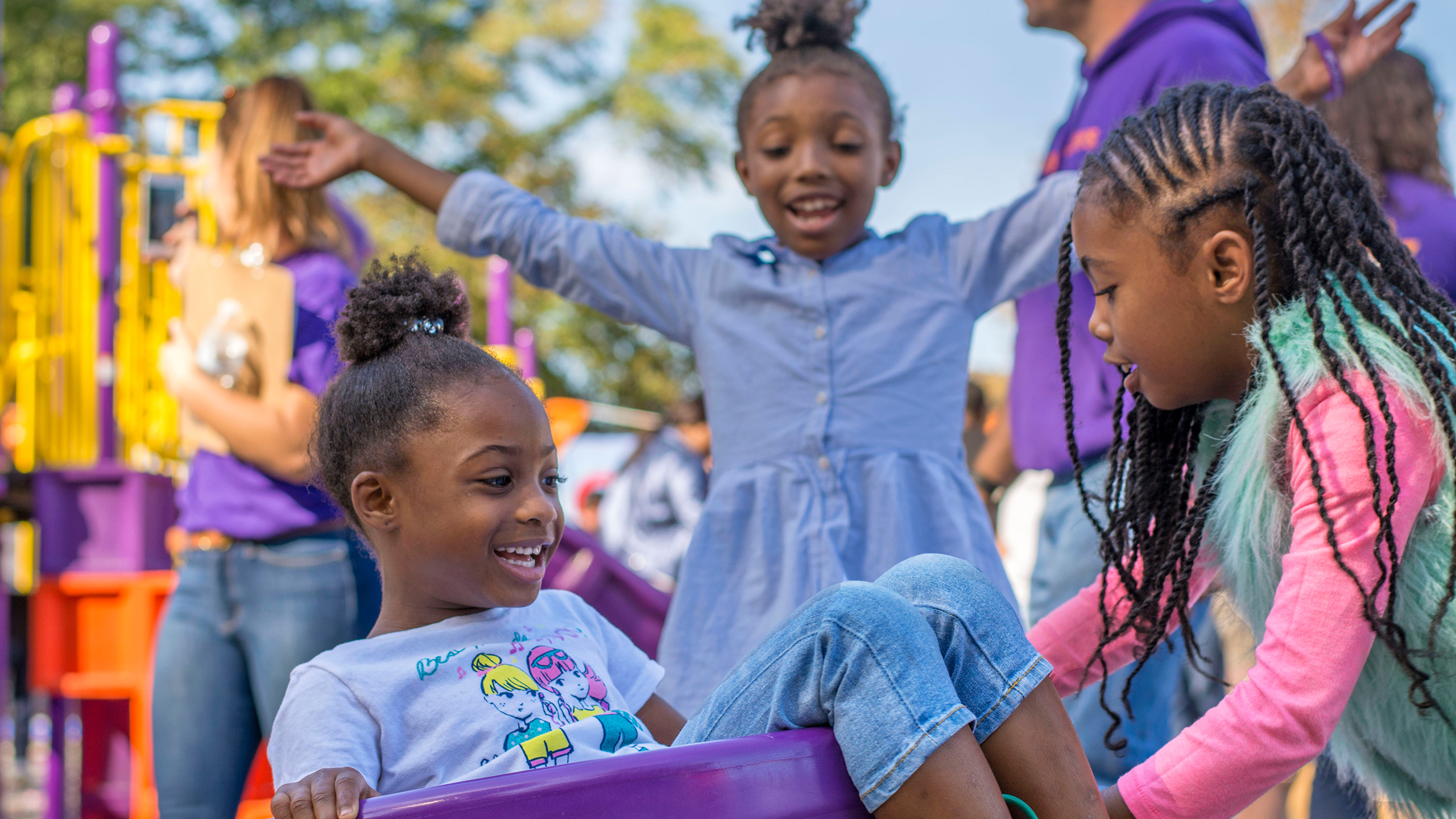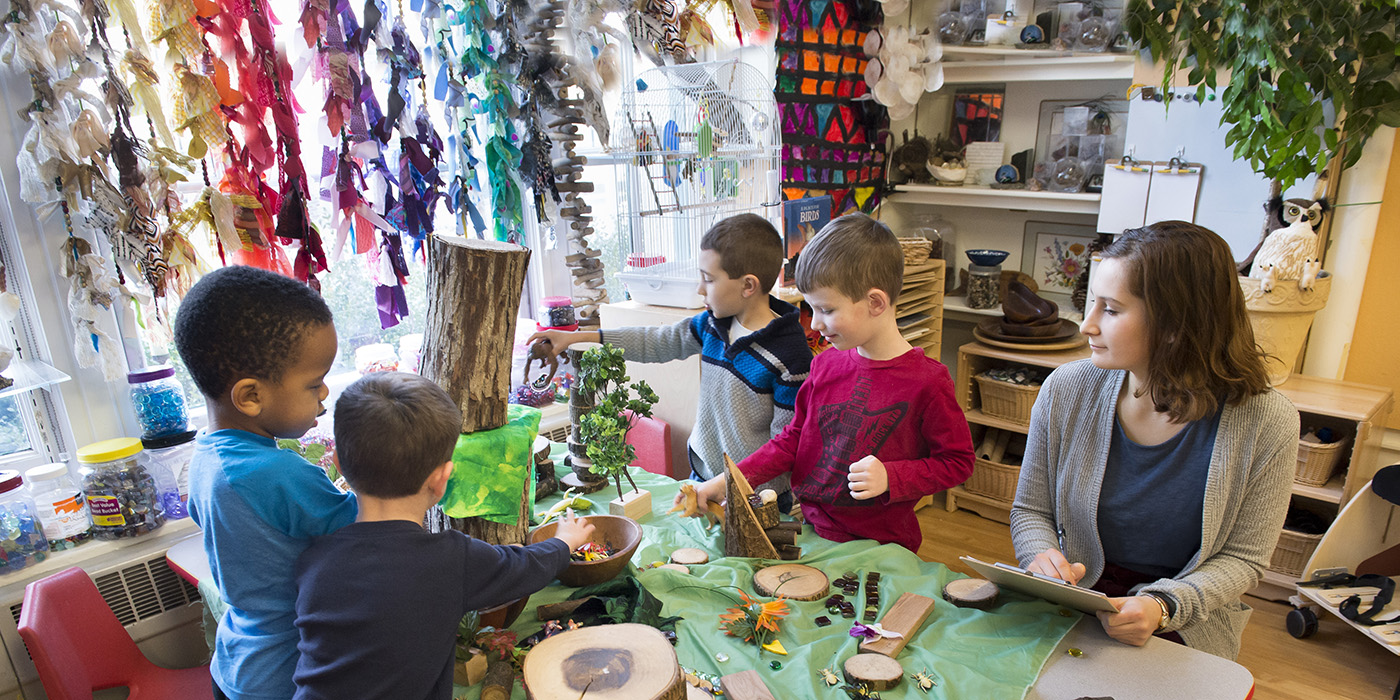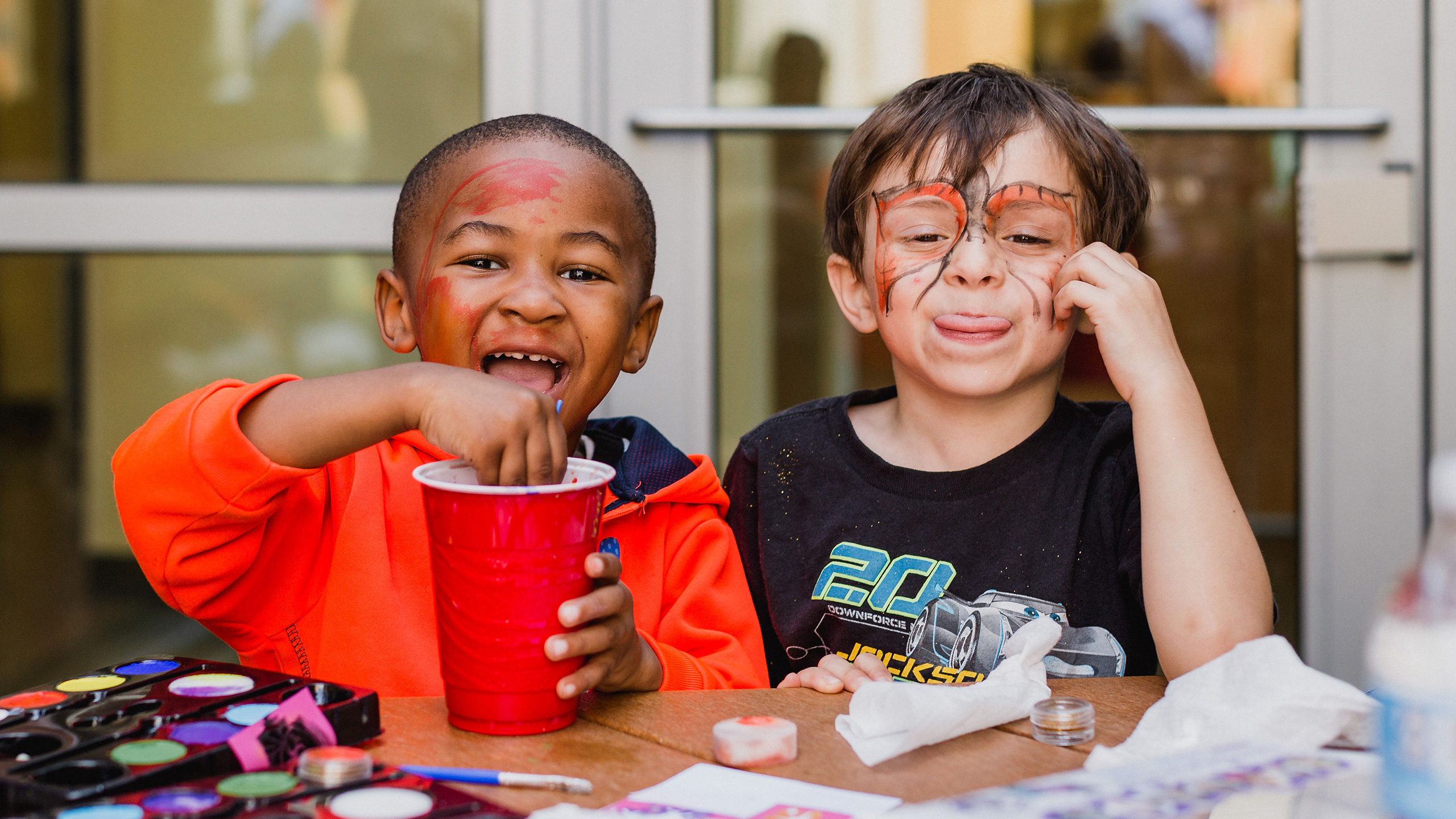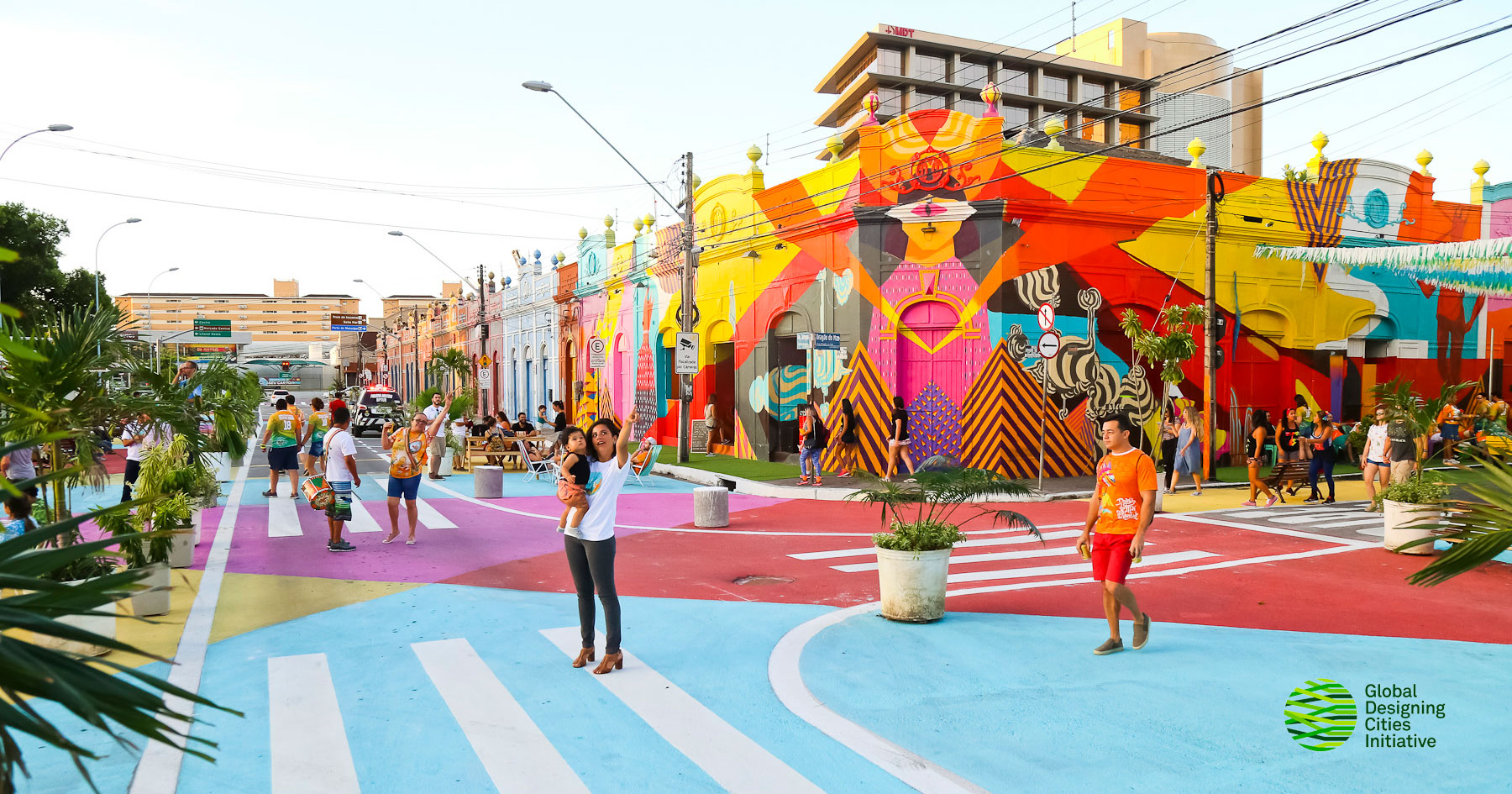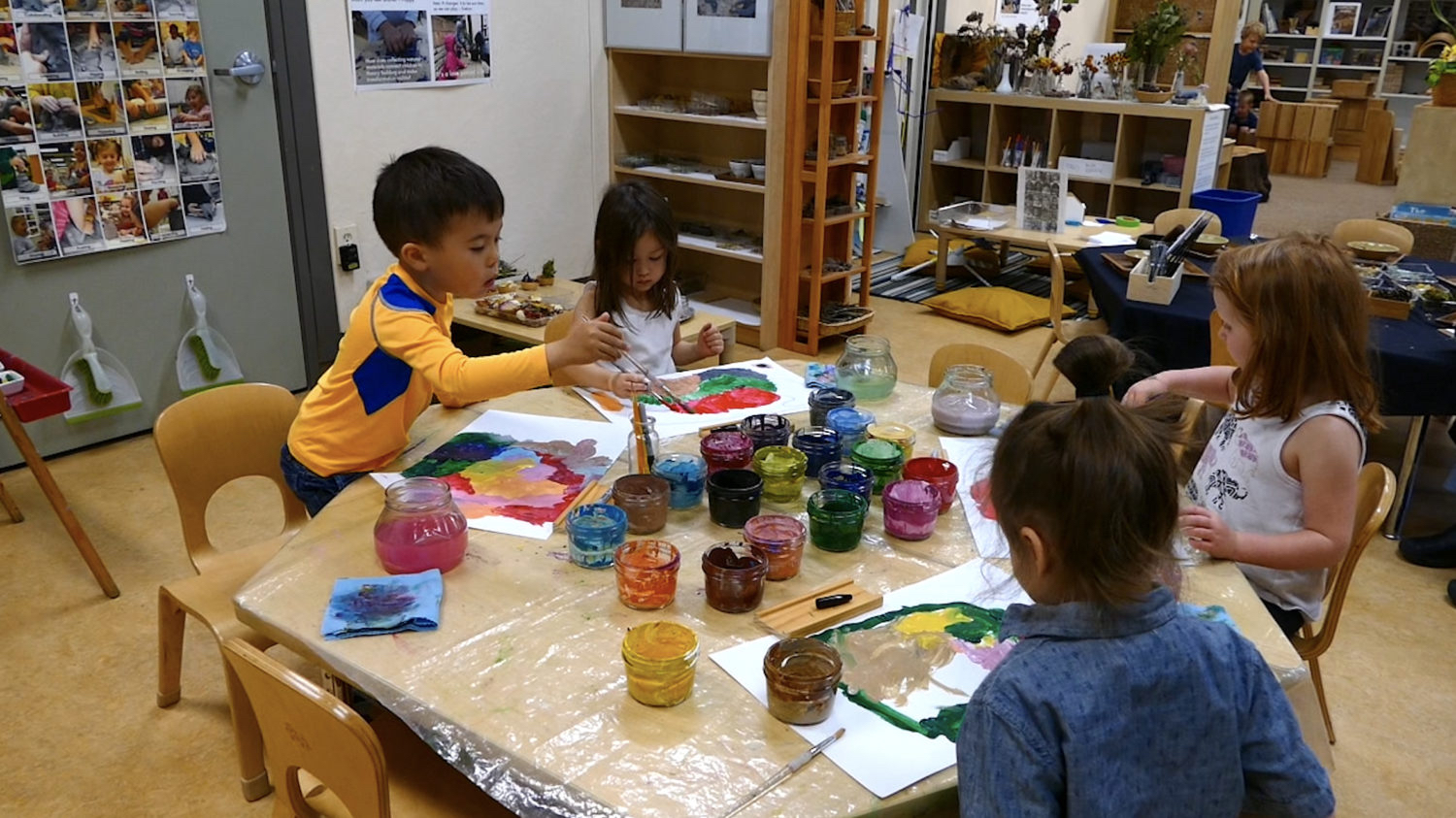Play is an activity enjoyed for its own sake,” writes Diane Ackerman in her 1999 book Deep Play. “It is our brain’s favorite way of learning and maneuvering…. It’s organic to who and what we are, a process as instinctive as breathing.” Researchers continue to explore the many ways that play drives early learning. A recent white paper published by the LEGO Foundation counted 300 studies across over 40 countries that demonstrated a link between play and skill building in young children.
Early Learning Nation magazine’s new series “Seasons of Play,” highlight recent developments in playful learning and capture the thinking of the field’s leading figures. Read them all. Enjoy!
Too many communities of color lack access to the spaces and facilities needed for quality play. And even if those spaces do exist nearby, children won’t play there if they don’t feel safe, welcome, included and comfortable. “Playspace Inequity” is the term that the national nonprofit KABOOM! has given this phenomenon, and the 25 in 5 Initiative is how the organization aims to solve it in five years.
This commitment is not a new impulse for KABOOM! but rather one that reaches back to 1995, when founder Darell Hammond read a Washington Post story about two D.C. children who couldn’t find anywhere to play and subsequently died from heat exhaustion in an abandoned car.
👉 Discover the race equity journey of KABOOM!
Here’s what I learned when I spoke to Drustva Delgadillo (senior director, Partnership Development), Sally Dorman (director, Regional Partnerships) and Kevin Paul (associate director, Thought Leadership) about how they are scaling impact and partnering with municipal systems across the country:
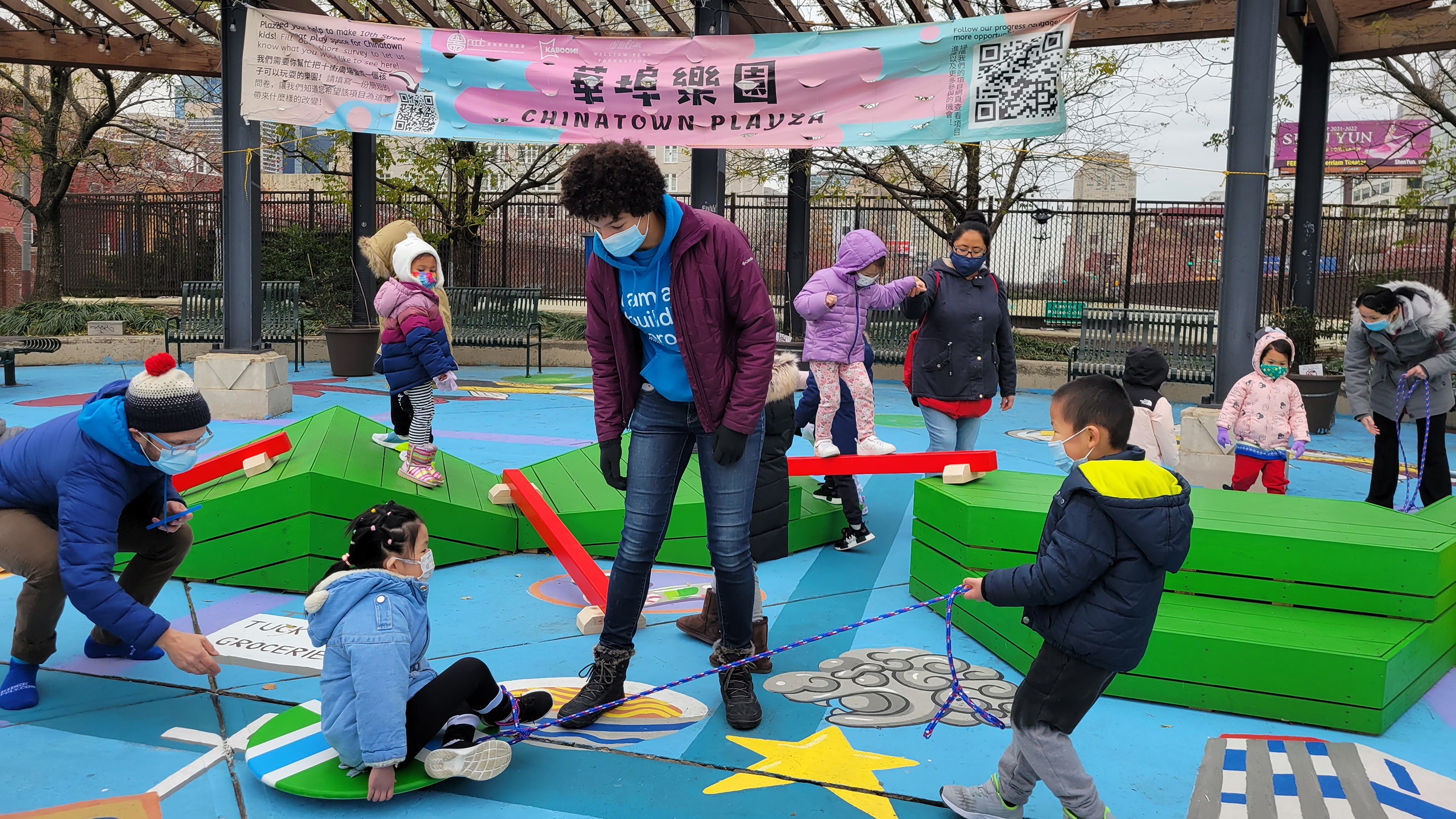
• A daily allowance of play. The World Health Organization’s guidelines for children five and under call for 180 minutes of physical play seven days a week. “What we really need to do is bring back play for children,” said Dr. Juana Willumsen, WHO focal point for childhood obesity and physical activity.
And the American Academy of Pediatrics emphatically recommends outdoor play, noting, “Children play harder outdoors than indoors and they need daily opportunities to do so…. Playing outside promotes curiosity, creativity and critical thinking.”
Delgadillo, the mother of two young children, agrees, noting that child care providers need to provide play spaces in order to receive their quality ratings. “Just walking children to an open space isn’t enough,” she says. “That’s the need that we are trying to address.”
• Historical inequity interferes with today’s play. Research by KABOOM! shows that lower socioeconomic status, racial and ethnic minority and rural populations have limited access in neighborhoods compared to wealthier, white and urban groups. It’s important to acknowledge that Playspace Inequity didn’t just happen. Tug on the thread of playgrounds and you get to all these other issues that communities can’t thrive because of historic and institutional racism and other factors.
👉 View Marjora Carter’s powerful TED Talk: Greening the Ghetto
According to Paul, housing policy, redlining and segregation all contribute to the problem. “We also see surrounding physical and social conditions, as well as issues like limited access to transportation, personal safety concerns and lack of inclusive programming,” he says, adding, “If we want to make an impact, if we actually want to create a difference for kids, we’re going to have to work at that systems level, because that’s where the problems originated.”
👉 Read Tackling the Play Deficit
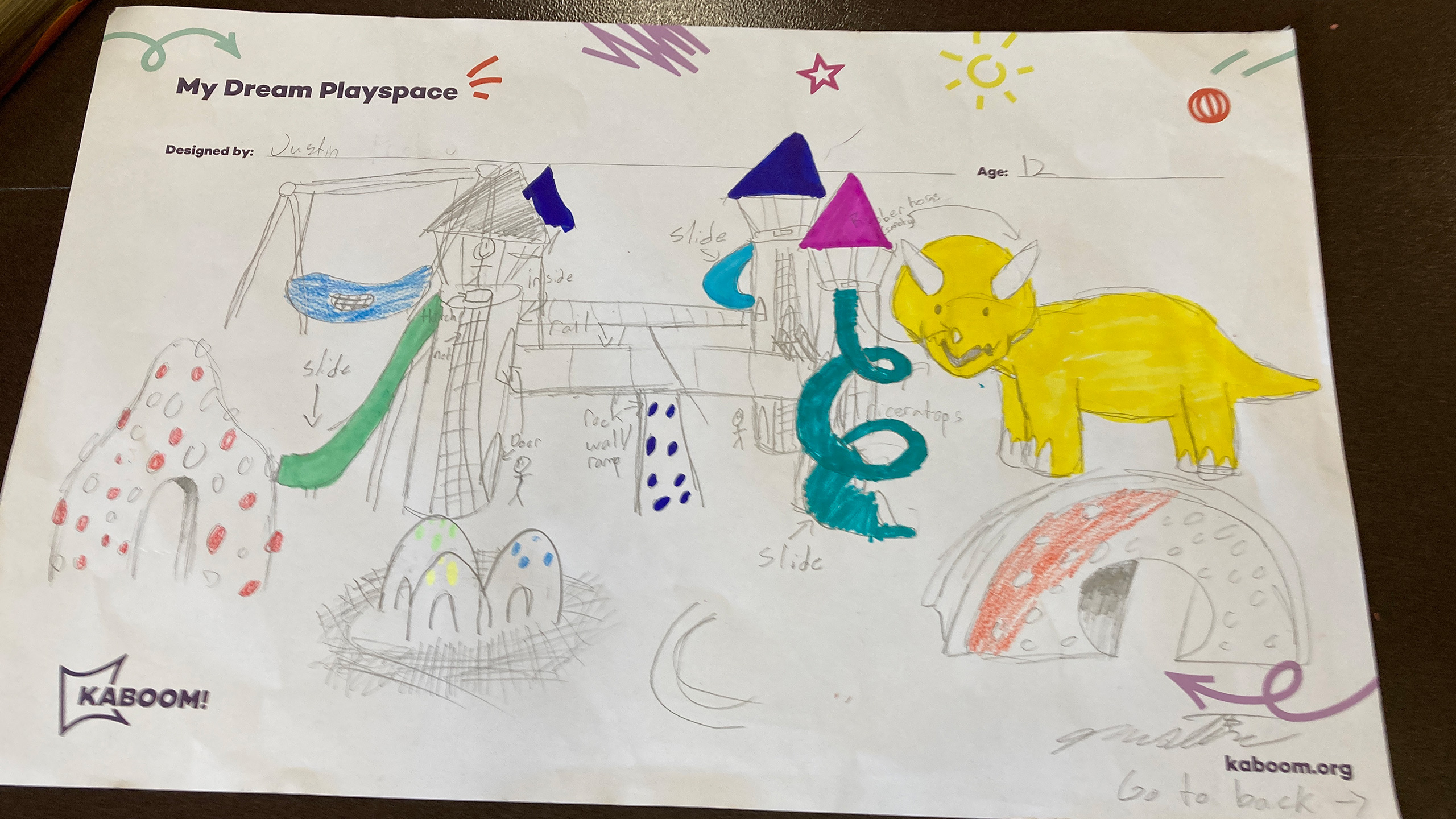
• Data and play are not opposites. KABOOM! has gotten sophisticated about play. To evaluate the 16 playgrounds built with funding from the William Penn Foundation for the Play Everywhere Philly Challenge, a study conducted with the Drexel University Urban Health Collaborative involved geospatial mapping and analysis of neighborhood context; Environmental Assessment of Public Recreation Spaces; System for Observing Play and Leisure Activity observations; and on-site surveys of adult, English-speaking visitors.
Sean Perkins, chief of early childhood education, Office of Children and Families, says, “Philadelphia, under the Kenney administration, has clearly prioritized investing in its families, particularly its youngest children. The Office of Children and Families is excited to continue its partnership with KABOOM! to identify areas of the city that most need playful learning environments by both meeting with residents and using available data.” Dorman praises the Office of Children and Families for their holistic approach and also mentions the work of Rebuild Philadelphia in addressing inequities through development of parks and recreation centers.
KABOOM! also collaborated with Child Care Aware of America and Vanguard to create a story map capturing Philadelphia’s landscape of play space inequity for kids ages zero to six. In addition to sophisticated mapping, the project included survey data from child care providers and other community members.
A long-term partnership with the Colorado Health Foundation has zeroed in on play in rural communities, generating data that advocates use to push for expanding the tax base to generate more public investment in play spaces.
• There’s more to play than playgrounds. The KABOOM! team embraces what Dorman calls a “vision for place-based equity that’s focused on everywhere kids live, learn and play,” which means parks, schools, libraries, child care centers and beyond.
Moving slowly is a feature of their approach, she says. “We typically start with assessment work to understand where the gaps exist currently, and then from there we engage community members, city leaders and partners who are already doing this work. We ask them, ‘What is the data showing? Is this data accurate? What do you see as barriers or challenges that are perpetuating place-based inequity in your cities and communities? What do you see as potential solutions?’”
Paul notes that they especially value “folks who have been in neighborhoods for generations; they’re the experts in their community and their block.” They also ask children what they want in a playground—and listen to the answers.
• There’s more to playgrounds than play. All the data gathering and community surveys takes a lot more effort than just pulling up to an empty lot and unloading the equipment. That time is an essential part of their approach. “The more we can involve community in all this, the better,” says Paul. “If you come in with a fully baked solution, something that has just sort of popped out of the box, then there’s not as much sense of collective ownership.”
KABOOM! is and always will be known for building playgrounds, and over the years the organization has gained an appreciation of what these spaces mean to people of all ages. “They’re important for kids and families,” says Delgadillo, “but they also play a role in building community as a whole and making communities safer and more welcoming, more beautiful.”
More from the Seasons of Play series:
A Day Trip to Philadelphia Shows What Playful Learning Is—and Isn’t
Part 1 of "Seasons of Play" Series
“Play is an activity enjoyed for its own sake,” writes Diane Ackerman in her 1999 book Deep Play. “It is our brain’s favorite way of learning and maneuvering…. It’s organic to who and what we are, a process as instinctive as breathing.” Researchers continue to explore the many ways that play drives early learning. A recent white paper published by the LEGO Foundation counted 300 studies across over 40 countries that demonstrated a link between play and skill building in […]
Getting Messy in Madison: The 6 Sides of the Upcoming Play Make Learn 2023 Conference
Part 2 of "Seasons of Play" Series
The Play Make Learn conference, taking place July 20-21 at the University of Wisconsin-Madison, offers educators hands-on learning experiences and a chance to connect with colleagues from libraries, museums, schools and the wide world of games. The planners define playful learning quite broadly, says Emily L. Nott, a doctoral student in curriculum and instruction. “We have people who are approaching it from a games perspective, from an arts perspective, from an embodied learning perspective, but one of the common factors […]
The Children’s School in Pittsburgh: Where It’s Hard to Tell Play, Learning and Work Apart
Part 3 of "Seasons of Play" Series
The three-, four- and five-year-olds at the Children’s School at Carnegie Mellon University in Pittsburgh had a problem. They had blocks to move on the playground, but they didn’t have the wheelbarrows necessary to get the job done. So they got one of the teachers to help them write a note. Dr. Sharon Carver, who has been running the Children’s School since 1993, did not just chuckle and tape the request to the refrigerator. “We ordered the stuff they asked […]
Can Play ‘Level the Playing Field’ in Chicago? How VOCEL Is Shifting Strategy to Magnify Impact
Part 4 of “Seasons of Play” Series
Jesse Ilhardt is an evangelist for play. Her wildly popular TEDx talk, “How Play Helps a Kid’s Brain Grow,” shot in the friendly confines of Wrigley Field, is full of relatable nuggets like If learning is like a workout for the brain, then play-based learning is the heavy lifting and A couple household materials dropped into the bathtub, and this mundane routine becomes fun and surprisingly energizing bonding time for you and your child. The cofounder and executive director of […]
Tim Gill and Ankita Chachra Discuss How and Why Cities of the Future Can Work Better for Children
Part 5 of “Seasons of Play” Series
Tim Gill’s book Urban Playground: How Child-Friendly Planning and Design Can Save Cities is a timely and engaging manifesto, full of maps and charts, pointing to future cities where play happens in streets, squares and green spaces, not just playgrounds. Further, he celebrates public spaces that “nurture contact between families in different social groups.” Ankita Chachra, senior fellow at Capita, recently posted an essay, “Connecting Cities, Young Children and Climate Action,” describing how her dual journeys as an urban planner […]
Inspiring Educators with No Borders Between Play and Learning at the Center for Playful Inquiry
Part 6 in “Seasons of Play” Series
If you’ve been following along, you’ll have found two common threads running through our Seasons of Play series: (1) play is important for childhood development; and (2) there should be no border between play and learning. The Center for Playful Inquiry’s Susan Harris MacKay and Matt Karlsen go even further in their commitment to play. More than just an educational endeavor, play is a reliable weapon in the fight against fascism. This belief is rooted in the Italian city of […]
Building Equity by Building Playgrounds (and More)
Part 7 in “Seasons of Play” Series
Too many communities of color lack access to the spaces and facilities needed for quality play. And even if those spaces do exist nearby, children won’t play there if they don’t feel safe, welcome, included and comfortable. “Playspace Inequity” is the term that the national nonprofit KaBOOM! has given this phenomenon, and the 25 in 5 Initiative is how the organization aims to solve it in five years.
Play Is a Child’s Search for Meaning: Q&A with Brenda Fyfe
Part 8 in “Seasons of Play” Series
To learn more about play’s place in the Reggio Emilia approach, Early Learning Nation magazine spoke to Brenda Fyfe, dean and professor emeritus of the School of Education at Webster University.
My conversation with the Center for Playful Inquiry’s Susan Harris MacKay and Matt Karlsen ignited an intense curiosity about how early learning spaces might become zones for creativity, which sent me to the library (or three) to investigate Reggio Emilia. One text in particular, In the Spirit of the Studio: Learning from the Atelier of Reggio Emilia (2015) powerfully conveyed to me the potential of the atelier (French for studio; this piece will use the words interchangeably). In the book’s […]

Mark Swartz
Mark Swartz writes about efforts to improve early care and education as well as developments in the U.S. care economy. He lives in Maryland.


